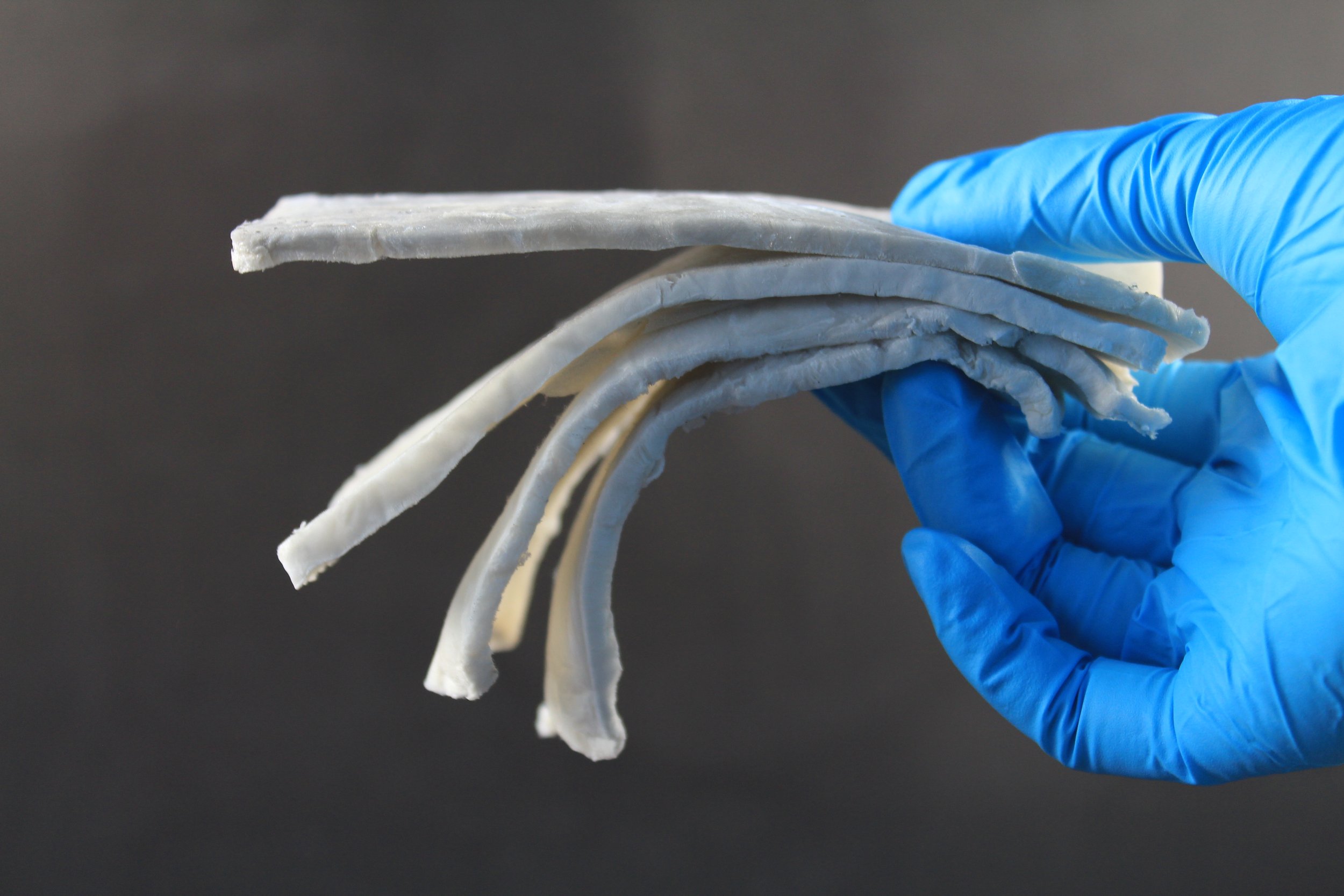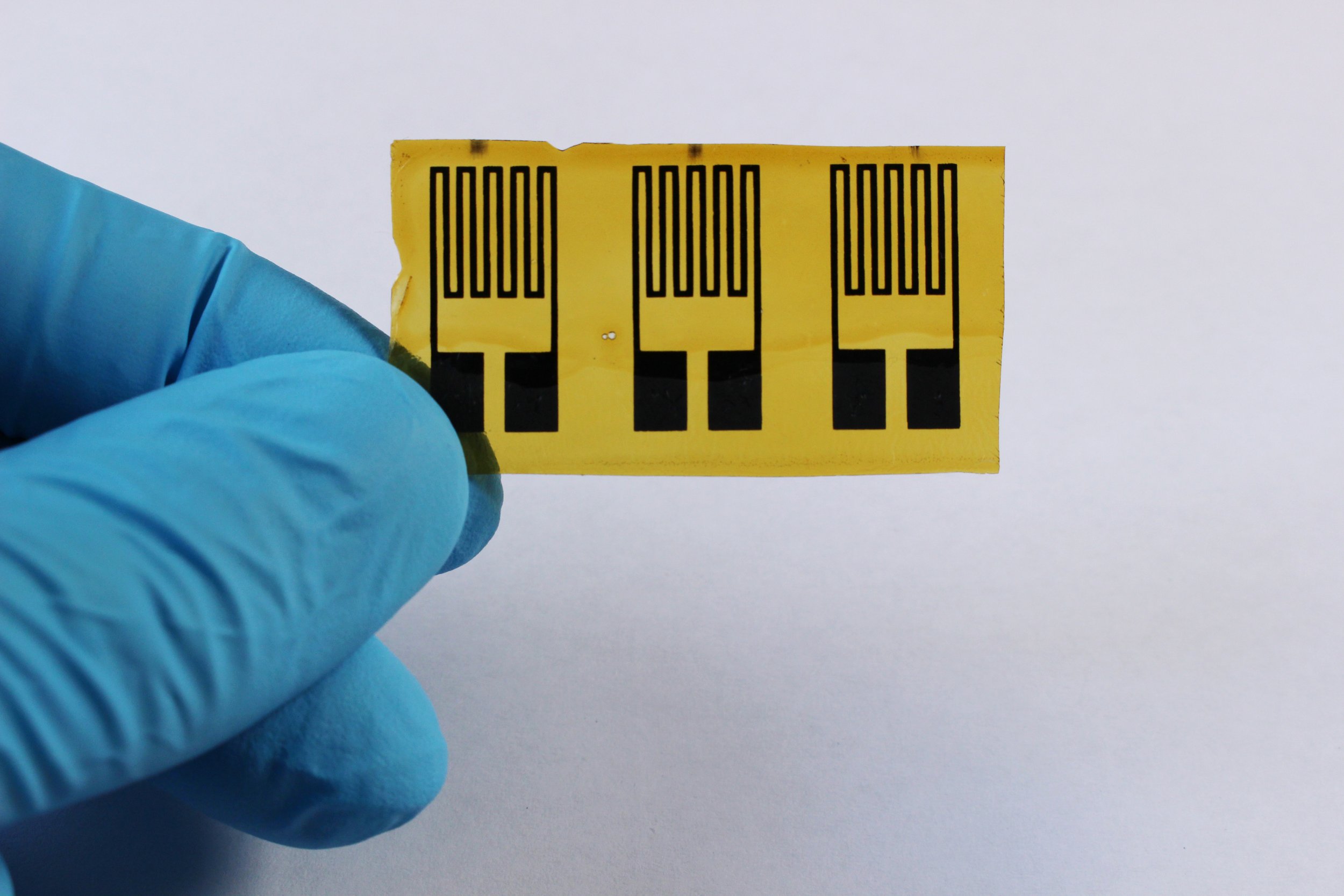Projects
Fungal Biobatteries
Inspired by natural biodegradation processes, we are developing 3D printed fungal biobatteries or microbial fuel cells. These living material systems deliver power for small wireless temperature sensors and may find future application within environmental monitoring, agriculture sensing or biomedical diagnostics.
Nanocellulose Protein Biohybrids
The environmental challenges faced by our society have dramatically increased the demand of novel sustainable materials. Combining the two natural polymers cellulose and proteins merges highly attractive mechanical and functional properties in new biohybrid materials with wide application potential in hydrogels, films and coatings.
Conductive Biohybrid Aerogels
Combining biopolymers with conductive materials such as carbons, metallic particles and MXenes allows us to create colloidal hydrogels that can be processed into conductive biohybrid aerogels. These materials are ultralight, soft, mechanically flexible and can be designed to have electronic and electromagnetic functionalities that can be useful for electromagnetic shielding or optical elements.
Structural Color Inks
We are developing biodegradable dispersions or inks that display vibrant colors owing from their nanostructural arrangements in liquid crystal phases. These colors arise from similar regular material phases occurring in nature in some plants, beetles and bird feathers. With these inks we are creating multistimuli-responsive materials such as electro-optical strain sensors, photonic coatings and displays.
Sustainable Spray Packaging
Plastic packaging in grocery stores protects fruits and vegetables from spoilage, but also creates significant amounts of waste. As a potential solution to this problem we have developed a sustainable spray packaging solution that can be sprayed directly onto the surface of fruits and vegetables. This solution provides a significantly improved shelf life and may contribute to reduced food waste when applied at different steps along the food logistics chain.
Green Smart Packaging
The goal of this project is to realize ultra-low cost simple eco-friendly chipless sensor tags that are read fully automatically without altering existing infrastructure and processes in authentication and logistics. To achieve this new biocompatible and biodegradable materials compatible with printing are developed, as well as wireless sensor structures that can be read with zero power RF systems.
Printed Paper Batteries
We are developing a new type of eco-friendly energy source on paper-based substrates using nanocellulose as an integral component combined with other environmentally benign materials. The fabrication is done using scalable printing processes and our devices are targeted for low cost large volume applications within environmental and agricultural sensing, food packaging tracking and sensing and biomedical devices and implants.
Amyloid Fibril Tactoids
Amyloid fibrils are a chiral protein-based system, formed through the self-assembly of β-sheet aggregates into twisted or helical ribbons. Traditionally they are known in relation to Parkinson’s and Alzheimer’s disease but recently they have gained increasing attention as important building blocks for bionanotechnology, where they can serve as a versatile platform for new functional biomaterials. We studied amyloid fibrils confined in small liquid crystal droplets, so called tactoids, and showed that the size of the droplet can dictate the structure that emerge within the droplet including the formation of homogenous, bipolar and chiral nematic phases.
3D LbL Assemblies
Layer-by-layer assembly is a versatile method to construct functional surfaces and coatings using a variety of polymers, biocolloids and nanoparticles. These assemblies are typically built up using alternating positive and negative charged layers on planar substrates and forming layers within bulk materials is typically challenging. We developed a fast and precise method to functionalize the pore walls of nanocellulose aerogels and showed that this could be used to build fully interdigitated 3D electronic devices within the aerogels.
Ultralight Gold Aerogels
We used amyloid fibrils as a green route to nucleate gold crystals from a gold salt solution and engineered ultraporous aerogels using the high aspect ratio amyloid fibrils as building blocks. The final materials had the traditional appearance of solid gold yet a fraction of its weight (1000 times lighter at 20 kt equivalent quality). These soft materials can furthermore be molded into various shapes and depending on the size of the gold crystal display extended e.g. catalytic or pressure sensing functionality.
Twisted Fibrils
Our work in this area is dedicated to a detailed investigation of the structure of single nanocellulose fibrils including studies of how they bend, twist and break as a result of chemical or mechanical treatments. We have specifically shown how the charge density can be used as a tool to tune aspect ratio, amount of right-handed twisting and density of mechanical artefacts in the form of kinks. We believe that knowledge of the individual nanocellulose structure may have an impact on the self-organization of these biological colloids and their optimal use in new nanomaterials.
Nanofiber Aerogels
Aerogels are a class of nanomaterials that combine ultralight weight with low thermal conductivity and optical translucency. Today, the most commonly used gel precursor is based on silica and the resulting materials are mesoporous and highly thermally insulating but are tainted by mechanical brittleness. In this project we used well controlled organic nanofibers as a starting point to map out and understand the structure-property relations between the nanoscale structural features of the aerogel building blockst and its macroscopic mechanical response.


























